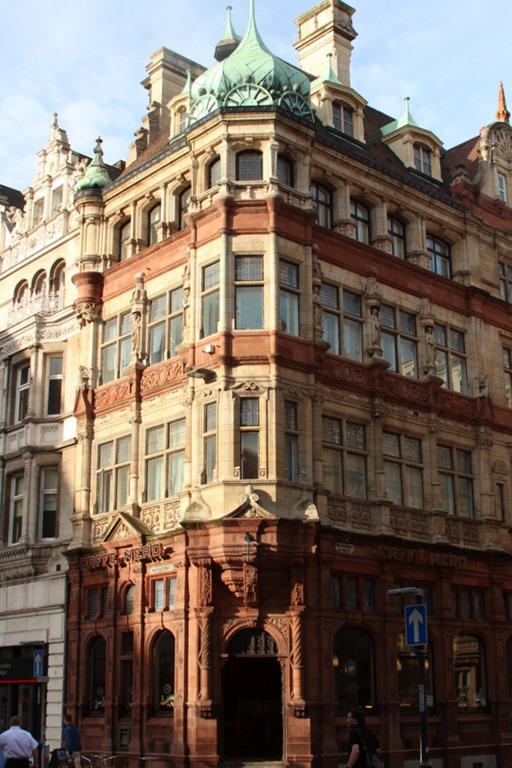 I am something of a trainspotter.
I am something of a trainspotter.
That’s not to say I have ever stood at the end of a platform writing down the numbers of the trains that go by, rather that have an interest in things of a railway nature. So obviously I was very excited to get the opportunity to go to Paris on the train.
I’ve been to Paris on the train before. Fifteen years or so ago HappyMouffetard and I travelled from Cambridge to Paris for the odd weekend. In fact that’s where HappyMouffetard picked up her twitter handle. In those days the terminus for the Eurostar was at Waterloo, so the trip meant crossing London from Kings Cross where the Cambridge train came in. Once on the Eurostar you pottered through Kent to the Dover end of the tunnel at what seemed like barely more than walking pace. After passing through the tunnel to France the train accelerated for a while before the guard told us we were travelling at some unimaginable velocity. He sounded a bit smug. The Eurostar would then whine rapidly through northern France to arrive at Gare du Nord.
Things have changed. Now the Eurostar terminus is at St Pancras which is next door to Kings Cross and a short step down the road from Euston, the station I arrive at from Chester. St Pancras International is a rather fine station, particularly when compared to the competition: airports. Not only does it offer a long bank of charging points but also free Wifi! The trip to Dover is transformed, the train plunges underground for the first few miles but then whizzes along at positively unBritish speeds to the Channel. A little over two hours after leaving London, you are in Paris. Pick the right trains and there are just two scheduled stops between Chester and Paris (at Crewe and in London)!
This makes the whole journey rather more of a practical proposition, even if you are travelling from northern England. Chester to London is currently a little over two hours travel time, it would take me an hour and a bit to reach Manchester airport. Check-in for Eurostar is an hour or so, and then a couple of hours to Paris and you end up at Gare du Nord in the centre of Paris rather than Charles de Gaulle Airport – some distance away. Once at Gare du Nord you walk straight off the train onto the street. Similarly on my return trip, I walk straight off the train and I’m on the platform at Euston in 15 minutes.
I’ve rarely found airports relaxing, they seem hellholes of “duty-free” shopping, stressed travellers, over-crowding, bad food, building works to insert more shopping opportunities, suffused with baseline low-level dread that the implausibility of powered flight invokes. The only exceptions I’ve found are when I’ve been able to travel business class and take refuge in the business lounge. In fact, I’m not bothered about the business class flying experience – it’s the lounge I’d pay for myself! And once you’re on the plane it’s cheek by jowl with your fellow man, and air hostesses trying to force plastic food upon you, hand luggage woes as there is insufficient space for the hand luggage everyone now carries since you get gouged for hold luggage.
Cost wise things aren’t so happy, a train to London is expensive unless you travel “off peak”, a small window in the middle of the day and later in the evening.
In summary, from Chester to Paris:
Flying: 1 hour 30 minutes + 2hours check-in + 1 hour 30 minutes flight + 1 hour to Paris + airport hell = nasty 6 hours
Train: 2 hours + 1 hour check-in + 2 hours + shiny nice things = nice 5 hours



























